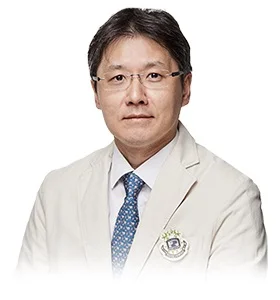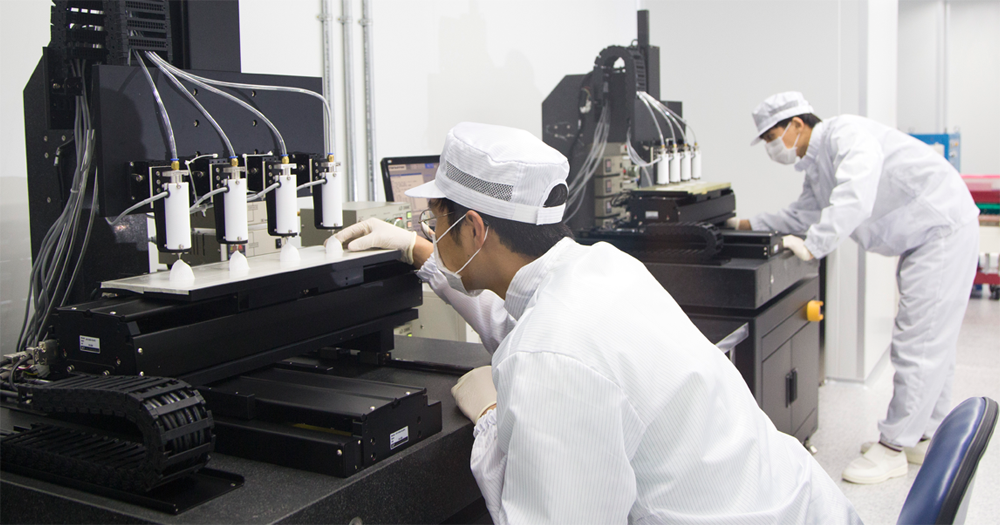A research team from the Catholic University of Korea has successfully implanted the world’s first bioprinted artificial trachea into a patient, customized using adult stem cells from another person.
Led by Professor Kim Sung-won from the university’s ENT (Ear, Nose, and Throat) Department, the team performed the transplantation on a woman in her fifties who had lost part of her trachea after undergoing thyroid cancer surgery. The surgery occurred last August, but the Catholic University delayed the announcement until six months of follow-up observation were completed, ensuring the successful engraftment of the trachea.
“The success of this transplant is a clinical trial success story of the world’s first artificial human organ developed by applying bioprinting precision engineering technology to print actual 3D cells from someone else’s adult stem cells,” said Sung-won. “This lays the foundation for the development of commercialization technology for patient-customized 3D bioprinted artificial organ transplantation and will play a significant role in the development process of advanced biopharmaceuticals for various intractable diseases in the future.”
At the heart of this groundbreaking work is a collaborative effort involving several prestigious institutions and key individuals. The project was spearheaded by the Catholic University of Korea’s Incheon St. Mary’s Hospital, where Sung-won and colleagues from the ENT and Thyroid and Endocrine Surgery departments made significant contributions. According to Incheon St. Mary’s, these medical professionals and their teams were instrumental in both the research and clinical aspects of developing the 3D bioprinted trachea.
However, the collaboration extended beyond Incheon St. Mary’s Hospital to include Gachon University and Pohang University of Science and Technology (POSTECH), contributing to the R&D phase. T&R Biofab (Kosdaq: 246710), known for its pioneering work in 3D bioprinting technology and regenerative medicine, also played a crucial role in the project. Its expertise in creating biocompatible materials and structures was instrumental in the successful development and surgical implantation of the artificial trachea. This initiative builds on a history of collaboration between T&R Biofab and the Catholic University of Korea’s network of hospitals, including T&R Biofab’s first clinical application at Seoul St. Mary’s Hospital and the establishment of a 3D printing-based Clinical Center in 2016.
Professor Nam In-chul from the ENT Department carried out the transplant surgery at Incheon St. Mary’s Hospital. However, prior to the surgery, researchers engaged in a rigorous process to develop the 3D bioprinted artificial organ. This involved nearly two decades of work on creating a patient-specific artificial organ using adult stem cells. The team, working under strict quality control protocols in the GMP cell production facility of Seoul St. Mary’s Hospital, bioprinted the organ to match the patient’s unique anatomical and cellular structure, ensuring a high chance of success and integration of the transplant.
“Having participated in the research for the past ten years and through numerous experiments, I have gained the know-how to successfully lead the world’s first transplant surgery of an artificial organ based on allogeneic adult stem cells. It is personally gratifying and an honor to successfully conclude this challenging and difficult research by applying it to actual clinical practice. Above all, through this research, I feel rewarded to be able to provide new hope for treatment to patients suffering from intractable airway diseases,” pointed out In-Cheol.
An essential part of our respiratory system, the trachea, is a tube-shaped structure that connects the neck to the chest, enabling the inflow and outflow of air as well as the discharge of secretions from the bronchi. It can become narrowed or damaged for various reasons, including thyroid cancer, other head and neck cancers, congenital anomalies, and trauma. Additionally, patients who undergo tracheal intubation and surgery, especially in the context of intensive care or during head and neck cancer operations, can experience tracheal stenosis, which is the loss of tracheal tissue.
Traditional treatments for tracheal defects have been complex and risky, often failing to restore the trachea to its former state, highlighting the urgent need for reconstructive techniques to rebuild the trachea while preserving its function. Despite the critical need, there has been a lack of alternative treatments capable of addressing these hurdles, making it a very difficult disease to treat. However, some innovations have been successful to varying degrees. For example, tracheal stenting has been widely successful in alleviating airway obstruction. It is commonly used in clinical practice, providing a non-surgical option to keep the airway open.
Endoscopic surgery, a minimally invasive approach, has also successfully treated certain tracheal conditions, such as removing blockages or opening narrowed sections of the trachea. Similarly, biocompatible grafts have shown promise in repairing or replacing damaged sections of the trachea. While tracheal transplantation is a complex and rare procedure, there have been successful cases where patients have received tracheal transplants.
Most of all, the success of a 3D bioprinted tracheal implant represents a significant step forward, offering new hope for patients with severe and complex tracheal issues. Although bioprinting is still a relatively new area, the development opens up new possibilities, offering new hope for patients with these severe and complex tracheal issues.
According to the university, the researchers used discarded human tissues from common procedures like nasal turbinate surgery, often performed to treat symptoms of nasal congestion. These discarded tissues were repurposed as a new source of functional adult stem cells. They also used cartilage cells harvested from discarded human cartilage tissue obtained during nasal septum surgery. These cells were then used to regenerate hyaline cartilage, a type of cartilage found in the respiratory tract, including the trachea. This repurposing of biological materials is a great way of using valuable resources for regenerative medicine and organ repair.
The culmination of this research marks a significant milestone in regenerative medicine, tracing back to 2003 with studies on human neural crest-derived nasal stem cells. According to the university, this foundational work led to the collaborative clinical study between the Catholic University and POSTECH, which began in 2004 with a focus on 3D bioprinting using cells from the nose. The establishment of the POSTECH-Catholic University Biomedical Engineering Research Institute in 2005 further advanced research in this area, paving the way for innovative treatments for complex tracheal conditions and promising developments in regenerative medical science. This successful surgery marks the beginning of a new chapter for South Korea’s bioprinting sector, with true potential to revolutionize medical interventions.
Subscribe to Our Email Newsletter
Stay up-to-date on all the latest news from the 3D printing industry and receive information and offers from third party vendors.
Print Services
Upload your 3D Models and get them printed quickly and efficiently.
You May Also Like
Reinventing Reindustrialization: Why NAVWAR Project Manager Spencer Koroly Invented a Made-in-America 3D Printer
It has become virtually impossible to regularly follow additive manufacturing (AM) industry news and not stumble across the term “defense industrial base” (DIB), a concept encompassing all the many diverse...
Inside The Barnes Global Advisors’ Vision for a Stronger AM Ecosystem
As additive manufacturing (AM) continues to revolutionize the industrial landscape, Pittsburgh-based consultancy The Barnes Global Advisors (TBGA) is helping shape what that future looks like. As the largest independent AM...
Ruggedized: How USMC Innovation Officer Matt Pine Navigates 3D Printing in the Military
Disclaimer: Matt Pine’s views are not the views of the Department of Defense nor the U.S. Marine Corps Throughout this decade thus far, the military’s adoption of additive manufacturing (AM)...
U.S. Congress Calls Out 3D Printing in Proposal for Commercial Reserve Manufacturing Network
Last week, the U.S. House of Representatives’ Appropriations Committee moved the FY 2026 defense bill forward to the House floor. Included in the legislation is a $131 million proposal for...




































